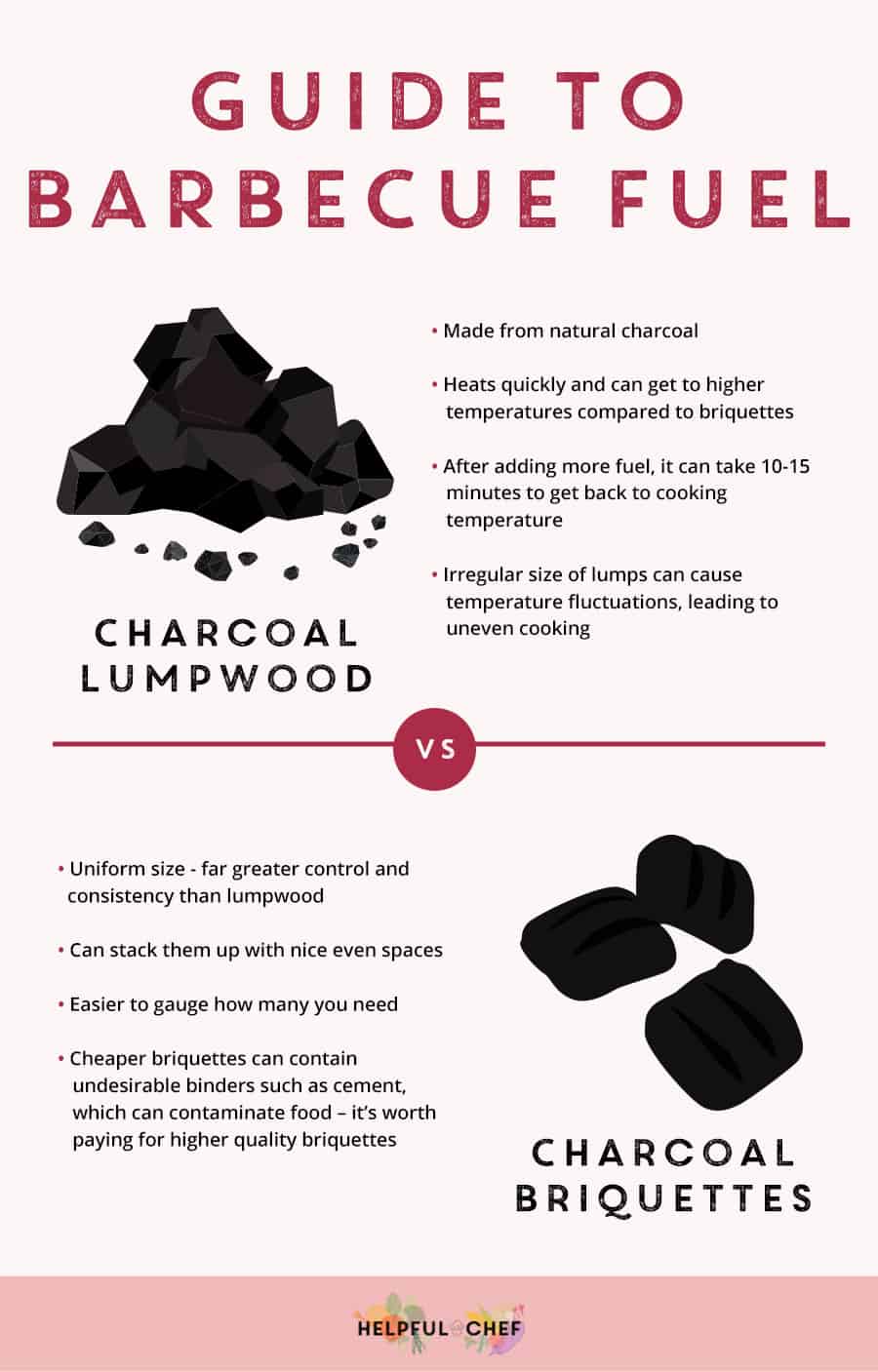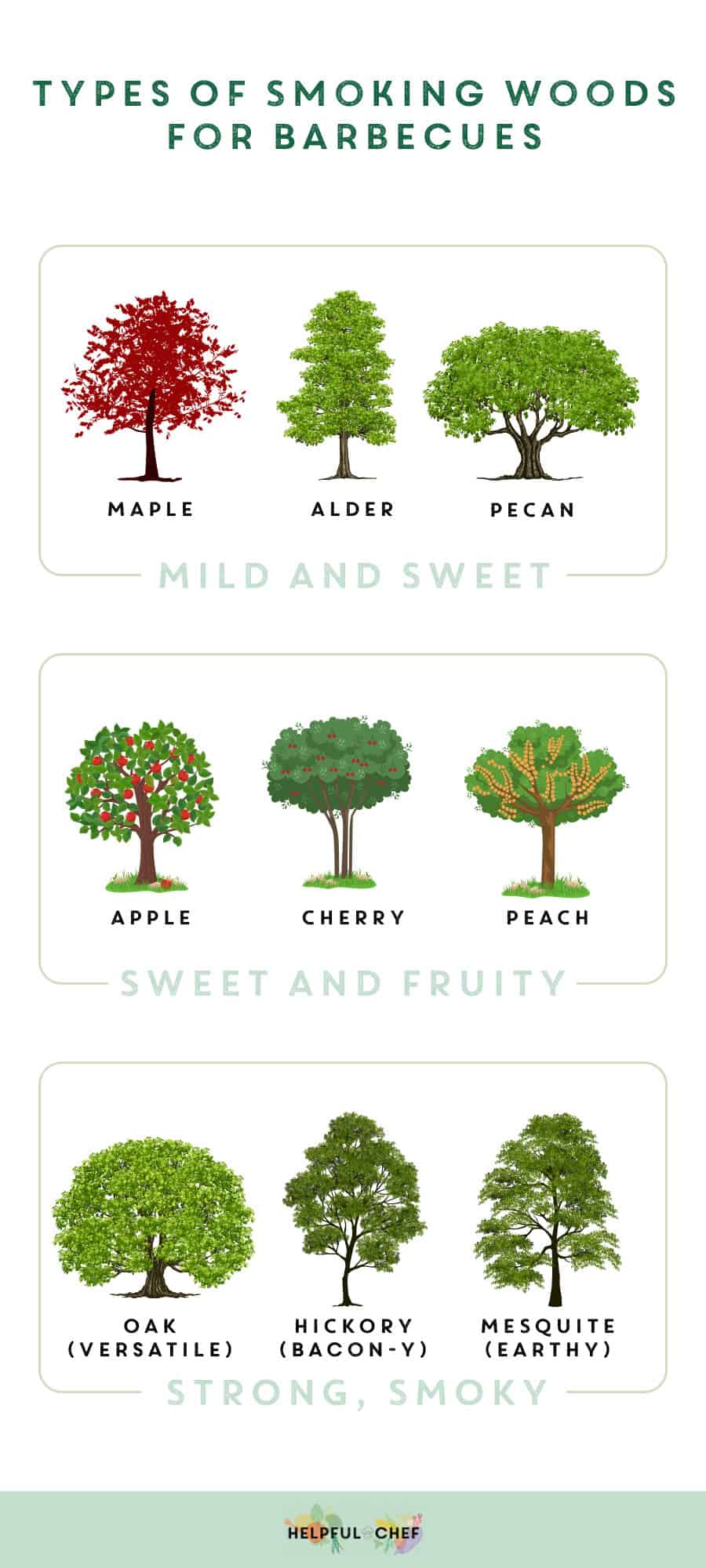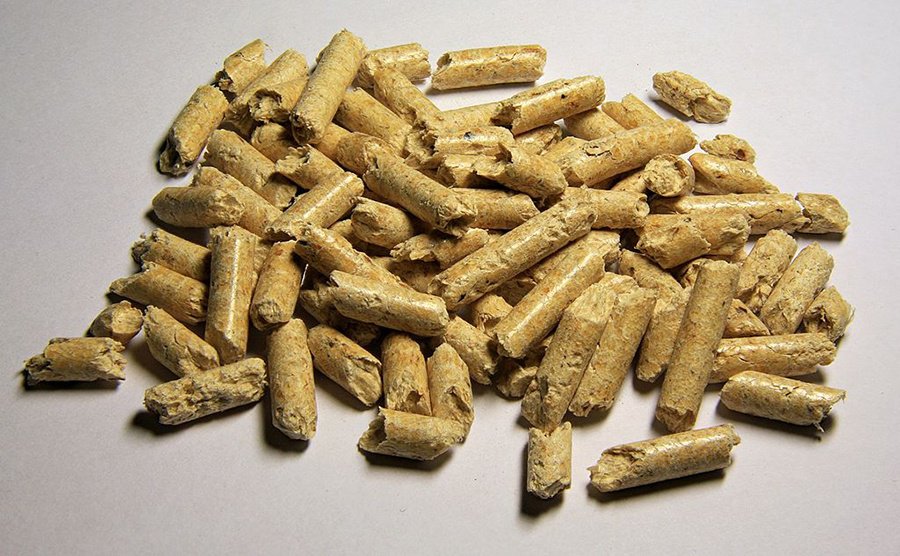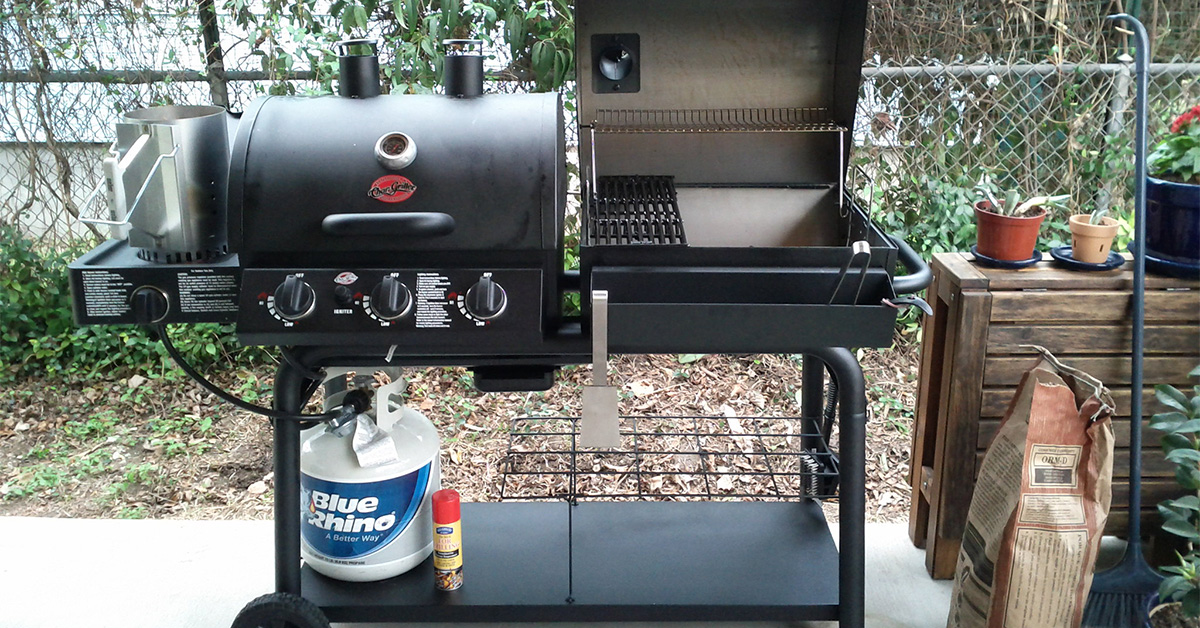The Ultimate Guide to The Different Types Of BBQ Fuel
On a warm, sunny evening, nothing quite beats the rich smoky smell of a barbecue. But to grill like a pro, you’ll want to work out which grill fuel you should be using and when. In this helpful guide to BBQ fuels, we’ll take a closer look at the different fuels on offer to help you truly master the art of BBQ.

With such a wide range of barbecue fuels out there, it can be confusing for beginners to know where to start. But this guide isn’t only for beginners – for those of you who have been grilling for years, this guide is here to help reassert your knowledge and maybe find out something new to try. In this section, we’ll take a look at what differentiates the types of fuels on the market today.
Charcoal
Charcoal is what people tend to think of as the go-to fuel for a barbecue. In actual fact, charcoal requires a little more flair and artistry than the other types of fuels. It takes some practice to master, but it can be a lot more fun to grill with, and the end results are well worth that extra little bit of effort.
· Versatile and pleasantly smoky
· High enjoyment factor!
· Takes time to master
· Higher maintenance than gas or electric
The main trick to charcoal cooking is to reduce the mass of the coal. To do this, we heat the charcoal in a reduced amount of air so that it doesn’t catch fire. If you have good control over your air intake, you should be able to avoid backfires. This means that once you get the hang of charcoal cooking, the major advantage it offers is a high level of control, which allows you to fine tune your cooking.
When working with charcoal, be aware that it takes a little longer to grill compared to propane gas, and requires a little more maintenance too. The coals can spit, and if they get too smoky they can leave a sooty coating on your food. Some of the chemicals produced from charcoal have been associated with an increased risk of cancer, too.[1]
What is charcoal?
Charcoal is made through the carbonization of wood.[2] The best charcoal is made from coppiced wood. By repeatedly felling the trees and allowing them to regrow, a sustainable supply of high-quality wood is ensured. Burning high quality ‘chunk’ charcoal, or ‘lumpwood’, is carbon neutral, so there’s less of an environmental payoff compared to gas fuels. However, gas is more environmentally friendly to burn than cheaper charcoal, which can contain all sorts, resulting in the production of up to 105 times more carbon monoxide than burning propane, alongside a range of harmful volatile organic compounds.[3]

How do I know when the charcoal is ready to cook with?
You can check that your charcoal is ready to cook on by taking a look at them. If you see black or grey lumps with flames, they’re not quite ready yet. Patience is key! Glowing white-hot coals with red centers (give the coals a gentle blow to check) means that you’re ready for direct cooking. Ashy, white coals will still be extremely hot too; they’re perfect for indirect heat or cooking directly in the coals.
What should I cook on a charcoal grill?
Charcoal is the best fuel to use for foods that require a high temperature for a short time. This makes it perfect for pizzas! Its flexibility as a fuel also means that charcoal can be used to cook for longer periods too when you set up direct and indirect heat zones on your grill. In fact, you can use it for grilling, searing or slow cooking meat. Charcoal is also great for anything from burgers and bacon, sides like corn or beans, and even dessert options like pies or cookies.
What types of grills can use charcoal?
Charcoal can be used with many barbecue types, from smaller kettles and kamados to larger grills. It’s so popular as a fuel that some gas grills have even added their own charcoal basket. Make the most of it if you’ve got one!
The Different Types of Charcoal

There are two main types of charcoal and both have individual properties that make them ideal for different types of cooking.
Charcoal Lumpwood
Lumpwood is a natural charcoal that has retained the shape of the wood pieces that were burned to make it. Lumpwood burns to nothing – and does so fairly quickly. In addition to this, it can heat quickly, and reach higher cooking temperatures than briquettes (see below). After reaching their optimum temperature, charcoal lumps will cool quickly. They can be too cool to cook on after around half an hour, so it always helps to have everything ready beforehand.
A word of caution: the blistering temperatures that lumpwood can reach can sometimes lead to the outside of meats burning before their insides have properly cooked. Moreover, once you end up on the other end of the temperature spectrum it can take around 10 to 15 minutes for newly added fuel to get back up to cooking temperatures so if you start cooking too early it can throw your timings off.
The irregular size of these charcoal lumps can also increase temperature fluctuations, which can lead to uneven cooking if you’re not careful. For this reason, we’d recommend going for high-quality bags of lumpwood, as the cheaper ones often contain lots of dust and smaller pieces. These make an even burn with plenty of space to fan the heat far less likely, so, in practice, these smaller pieces are pretty much unusable.
Charcoal Briquettes
Charcoal briquettes are an effective alternative to traditional lumpwood. They’re usually made from charcoal dust and a binder, such as starch and water.[4] People tend to go for lumps first, often based on the idea that they’re ‘more natural’, but the benefits of briquettes causes many to switch! Their uniform size allows for far greater control and heat consistency than lumpwood, as you can stack them up with nice even spaces to optimize airflow. It’s also easier to judge how many pieces you’ll need.
Briquettes can burn for around three hours, and should only take about 20 minutes to reach cooking temperature. They are best for cooking any foods that require consistent grilling temperature for a prolonged period, such as chicken. You can even use briquettes for long low and slow cooking on pieces such as brisket or ribs.
Watch out for cheaper briquettes, though, which can often contain undesirable binders such as cement – you don’t want that contaminating your food! Premium brands often list what goes into them, so they’re free of nasty surprises.
Hardwood Logs
Another great barbeque fuel is hardwood logs. The main advantage of these is the smoky taste they can provide – if used correctly. This fuel is more difficult to work with than charcoal due to the density of the wood, so we would recommend charcoal to beginners who want to move away from gas fuel.
· Can get extremely hot
· Rich smoky flavor
· Tricky to master
Hardwood logs can get extremely hot, enabling you to grill very effectively. Unfortunately, this can also lead to backfires! Hardwood is a great fuel to use either on its own, or simply added alongside another fuel, such as charcoal, to benefit from the unique, smoky flavor it imparts onto your food.
What are hardwood logs?
As you may have guessed, hardwood logs are simply just logs of hardwood! They give a lovely smoky flavor to anything you cook. Just make sure to avoid using softwoods such as pine, as the natural resin present in coniferous woods will give your food an unpleasant taste instead. Imparting flavor is a big part of wood cooking, which is why we’ve put together this handy infographic to on the different types of wood you can use:

How do I know when the hardwood is ready to cook with?
Once your logs are on fire, wait until they become burning embers. Embers are easier to control when cooking, allowing you to keep the heat even. It’s often more practical to get the hardwood logs prepared outside of the grill and then to transfer the embers to the grill when they’re burning. Be aware that if the oxygen levels are reduced while doing this, the air will have more difficulty acting as kindling to the fire.
What should I cook on a hardwood grill?
Hardwood logs are an ideal fuel for oven-style barbecuing, low and slow – we’re talking pies, pizzas, and cakes. It’s great for meat too, but be warned: grilling on a wood fire is far harder to master, so be prepared to put in the hours!
What types of grills can use hardwood logs?
Only use grills that are designed for wood burning – charcoal barbecues may not be as resistant to the extremely hot temperatures.
Wood Pellets
Wood pellets are more of a niche fuel type, due to the fact that you need a grill which is specially designed to use them. However, they are particularly straightforward to use, making them perfect for beginners, and can also enable more experienced grillers to explore a wide range of flavors.
· Ease of use
· Wide variety of flavors
· Can only be used on grills designed for their use
If you’d like to experiment with flavors but don’t have a pellet-suitable grill, you might want to consider using wood chips. We’ve got you covered in our helpful guide to smoking foods.
What are wood pellets?

Wood pellets are made from pressed sawdust, free from additives. There are many different types of pellets in a variety of flavors, and their ease of use makes them perfect for both casual grillers and anyone keen on experimenting with flavor.
How do I know when wood pellets are ready to cook with?
All you need to do is fill the pellet hopper of the smoker, plug it in, and select a cooking temperature. Hit ‘ignite’ and wait around ten minutes – the display on the grill should do all the monitoring for you. Then you’re good to go!
What should I cook on a wood pellet grill?
Most pellet grills can only reach temperatures of between 150 and 400 degrees Fahrenheit – so pellets are not recommended for grilling. However, they’re perfect for a wide range of flavorsome slow-cooked recipes! The variety of flavors allows you to try new things or perfect different flavor combinations for different recipes.
What types of grills can use wood pellets?
Pellets should only be used on grills designed exclusively for their use. These grills are powered with electricity and are specially designed with temperature gauges and fans for optimal pellet grilling.
Propane Gas
If you’re looking for a reliable and fuss-free way to grill for friends and family, a gas grill could be perfect for you. They may seem slightly more ‘sterile’ than a ‘proper’ charcoal grill, but there’s a reason that many restaurants and professional pit-masters go for gas.
· High level of heat control
· Almost as versatile as charcoal grills – and no mess from dirty coals
· Will not add flavor to your food – this can be a good thing and a bad thing!
Gas grills are almost as versatile as charcoal grills, but generally won’t get as hot as wood-fuelled or electric grills. This means that they won’t sear meat quite as well. However, gas grills are durable and tend to have good grilling power. They get up to cooking temperature quicker than charcoal, and require less cleaning too. The initial expense may be higher, but gas grills can work out cheaper and easier in the long-term.
What is propane gas?

Propane is a type of liquid petroleum gas, which is non-toxic, colorless, and almost odorless; a scent is added for safety purposes.[5] Because it can be compressed and stored as a liquid, it has a wide range of uses, including as a grill fuel.
How do I know when a gas grill is ready to cook with?
Gas grills are easy to light and are very low maintenance. As many gas grills use a simple piezo push-button ignition, you can start them up quickly with ease, even during the winter, and they will reach cooking temperature far quicker than charcoals.
They can also be used as an additional grill for sides such as vegetables or beans due to gas’s speed, simplicity and high level of control, so if you’re looking into getting a second grill to complement your main charcoal or wood grill, gas could be the way to go.
What should I cook on a gas grill?
Be aware that a gas grill will not impart any smoky flavor into your food, which can lead to somewhat boring flavors – this might not be what you want from a barbecue. However, the cunning chef will realise that this blank slate provides you with an opportunity to get creative with flavor. For example, you can use a tray filled with liquid inside the grill – beer or juice both work well – to add new steamy flavors to your grill. This will add some taste, and also add moisture, which can help to combat the dry air that gas flames tend to generate.
Many gas grills now come with a smoking box to fill with wood chips such as apple, maple, hickory or mesquite. You can also get separate metal containers or improvise one from an aluminum takeaway container – but be sure that the lid is metal too!
Adding one of these to your grill can help to add a smoky flavor to your food. Soak your chips for about two hours before using, and be careful not to add too many, as this will taste bitter and unpleasant. Food with longer cooking times such as brisket or ribs will take on a smokier flavor than foods with short cooking times like a steak.
Electricity
Electric grills are perfect for anyone with little space or time for grilling, or beginners just starting out. Electric grills are often wrongly overlooked by hardcore grilling enthusiasts, so there are few models on the market compared to gas or charcoal grills.
· Reliable and safe
· Can get very hot!
· Often overlooked by keen pit-masters
Almost all electric grills come with a cast iron grill and tub. This enables them to counterbalance their lack of power by retaining lots of heat in their cast iron grills.
What is an electric grill?
Electric bbqs use electricity to heat up cast iron grills, which do a great job of retaining their heat. When meats are placed on the grill, you get a great caramelization, and the ability to hit temperatures of up to 700 degrees Fahrenheit.
How do I know when an electric grill is ready to cook with?
Electric grills are very simple to cook with and provide an even heat which is easy to control. Some grills simply have an ‘on’ button, whereas others let you select a heat. This reliability leads to a lower risk of over- or under-cooking your food.
What should I cook on an electric grill?
Due to their versatility, electric grills can be used to cook a wide variety of foods that require direct heat. It’s always nice to take advantage of that high heat and caramelization though, so we love to use electric grills for steaks, chops, sausages, and burgers.
Much like gas grills, you can add additional flavors to your electric grill too. Marinades are great for adding smoky flavors, and can also improve the texture of meats. Acidic fruits such as kiwi and pineapple can help to sweeten and tenderize meats too, and flavors can also be obtained from whole heads of garlic, chilis, or other spices and rubs.
Which is the Best BBQ Fuel for You?
Now that we’ve covered the different types of fuel and how to use them, let’s narrow them down and help you decide which fuel is most suitable to your grilling style.
How often do you grill?
More experienced grillers may prefer a more rewarding fuel such as charcoal or hardwoods. Beginners and casual grillers, on the other hand, could benefit from an easier, lower-maintenance fuel such as a gas or electricity.
It’s also worth thinking about grill maintenance – charcoal and hardwoods will require more cleaning and attention than gas or electric grills, due to the carbon deposits they will leave on your grill. These need to be regularly cleaned – if you’re not sure what the best way to clean your grill is, take a look at our guide to grill cleaning.
What do you enjoy grilling most?
Now take a moment to think about the foods you like to cook on your grill or new foods you’d like to try cooking. If you’re a fan of smoking briskets, stewing steaks, or anything else with lots of connective fibers, keep in mind that these are best cooked slowly on a low heat to break down the tough white collagen that is present.[6] If you’re more a fan of thinner steaks like sirloin, these are best cooked quickly and at high temperatures, whether you like them medium, rare, or well-done.
You can go for a fuel type that thrives at the cooking temperatures you need, or pick something that gives you a bit more control and flexibility, such as electric or gas, to enable you to do both effectively.
Basically, it all comes down to cooking temperature control. The more even the temperature, the easier it is to cook your food how you like it. But don’t worry, an even temperature is achievable using any of the fuels listed. As long as you take the time to practise cooking with your chosen fuel, you’ll be alright!
Flavor
Smoke from charcoal has more of an effect on flavor when cooking slowly.
If it’s the smoky flavor you’re after but you’re short on space, check out the best smoker grill combos and see if any take your fancy.
Concerns
There are a couple of potential health concerns when grilling. These are important to keep in mind no matter what type of barbecue fuel you’re using, however, some types of fuel do pose more risks than others.[7] Let’s take a closer look at some of these risks.
Safe Grilling
A high and even temperature for the correct amount of time is essential to cook your food properly and kill any bacteria present.[8] This is easier to get right with gas or electric grills, which offer easy control over grill temperature.
Charcoal or hardwood, on the other hand, can be harder to get right. If the temperature is too high, you can char the outside of your food but leave the center uncooked. Also, if your grill isn’t burning evenly, this can lead to cold spots on the grill. Charcoal grills with a temperature gauge allow you to vary the airflow into the grill, which offers you a higher degree of control over temperature. We would also recommend investing in a food thermometer in order to check any high-risk foods such as meats (especially reformed meats like kebabs or burgers) are properly cooked through.[9] Our food safety guide looks at all this in greater detail.
Avoiding the production of unhealthy chemicals when grilling
It’s also very important to be aware of any potential health risks when grilling.[10] Charcoal in particular can form two kinds of potentially carcinogenic compounds in the cooked meat: polycyclic aromatic hydrocarbons (PAHs), which form from fat dripping onto charcoal; and heterocyclic amines (HCAs), which can form directly on your food when it chars. The higher your cooking temperatures and the longer your meat cooks, the more HCAs are formed. Cooking on a gas grill or using natural charcoal, made from 100% hardwood and no additives, can help to avoid exposure to these potentially harmful chemicals.
Summary
Now you know what’s what in the world of barbecue fuels. We hope that this article has helped you to decide which fuel is most suited to your personal grilling style or maybe even inspired you to branch out into new cooking styles. And if you still can’t decide, you may want to check out this article comparing the best gas charcoal grill combos. If you’re looking for more grilling-related articles, check out our ultimate guide to grills, smokers, and BBQs. Happy grilling!
FAQs
Q: I’m new to grilling. Which type of grill would you recommend for a beginner?
A: If you’re just starting out, good for you! For true beginners, we’d recommend either a gas grill, which are lower maintenance and easier to get the hang of. Check out our best gas grills under $200, $300, or $500 depending on your budget, or best small gas grills if you’re tighter on space.
If after reading this article, you think you’re more interested in the flavor profiles offered by charcoal, feel free to take a look at our articles on the best charcoal grills under $100 or $200.
Q: I’ve been grilling for a while now and would like to find out more about wood chips. How do I know which ones to use?
A: Experimenting with different smoky aromas is one of the most rewarding parts of grilling. There are a range of woods that are great to smoke with. Woods tend to fall into three categories: mild and sweet; sweet and fruity; and strong and smoky. Mild and sweet woods include maple, alder and pecan. Woods like apple, cherry and peach are sweet and fruity. If you’re looking for a strong, smoky flavor, you could go for versatile oak, earthy mesquite, or bacon-y hickory. We go into this in greater detail in our guide to smoking foods.
References
[1] MD Anderson Cancer Center (9 June 2011), ‘Keep Cancer off the BBQ Grill’. Accessed at: https://www.mdanderson.org/newsroom/does-eating-meat-cause-cancer—meat–cancer.h00-158672634.html.
[2] Medium (4 August 2017), ‘The Wood To Charcoal Carbonization Process’. Accessed at: https://medium.com/@robinchen7887/the-wood-to-charcoal-carbonization-process-188f0693baf5
[3] Planet Green (6 December 2017), ‘Charcoal Vs. Gas Grill: Which Is Better For The Environment?’. Accessed at: https://www.huffpost.com/entry/charcoal-vs-gas-grill-whi_n_109524.
[4] Loretta Hall (date unknown), ‘Charcoal Briquette’. Accessed at: http://www.madehow.com/Volume-4/Charcoal-Briquette.html.
[5] MET Group (27 July 2020), ‘What is the Difference Between Natural Gas and Propane?’. Accessed at: https://group.met.com/energy-insight/difference-between-natural-gas-and-propane/9.
[6] BC Cook Articulation Committee (8 September 2015), ‘Composition of Meat’. Accessed at: https://opentextbc.ca/meatcutting/chapter/composition-of-meat/.
[7] Joni Sweet (7 July 2018), ‘Is Grilling Bad For Your Health? Here’s What A Registered Dietitian And Oncology Specialist Wants You To Know’. Accessed at: https://www.healthyway.com/content/is-grilling-bad-for-your-health/.
[8] USDA (11 May 2020), ‘Safe Minimum Internal Temperature Chart’. Accessed at: https://www.fsis.usda.gov/food-safety/safe-food-handling-and-preparation/food-safety-basics/safe-temperature-chart.
[9] Nick Follows (31 July 2018), ‘Using a BBQ Thermometer for Safe Meat Preparation’. Accessed at: https://www.comarkinstruments.net/news/bbq-thermometer-safe-meat-preparation/.
[10] Earth Talk (28 July 2019), ‘The Health and Pollution Risks of Charcoal Grilling’. Accessed at: https://www.thoughtco.com/backyard-barbecues-bad-for-your-health-1203996.




